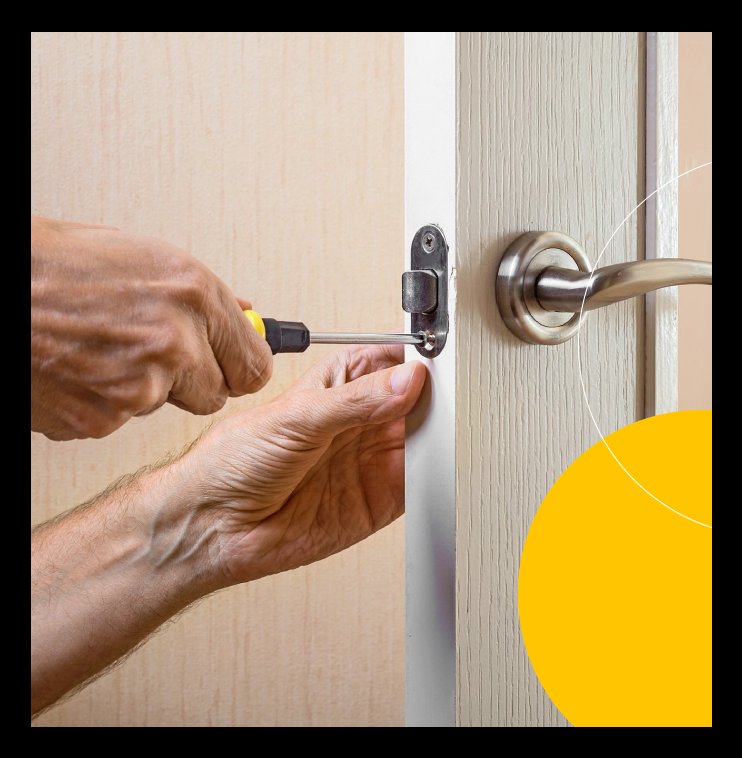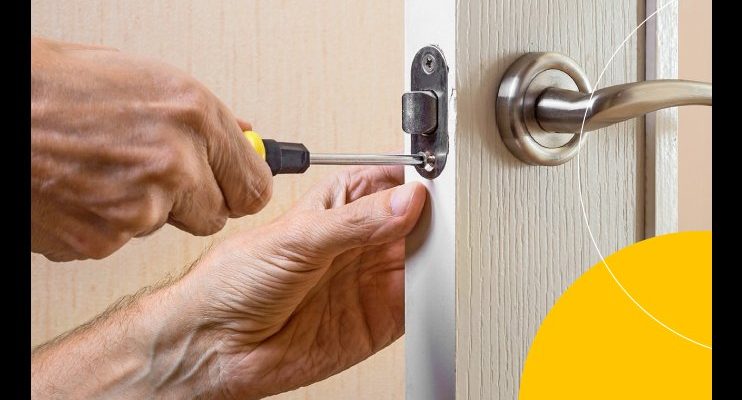
Let me explain: Modern hardware—think remotes, garage door openers, or wireless keypads—often sits near high-traffic areas. A strong slam sends vibration through the floor or wall, and anything “loose” inside those devices can end up jarred or even disconnected. I once had a GE universal remote stop syncing with my TV, only to realize my front door was the real culprit. Turns out, how you treat your doors can impact your tech more than you’d expect.
Why Door Slamming Affects Hardware Devices
Here’s the thing: Just like dropping your phone, a hard door slam creates shockwaves that travel through your house. These vibrations might seem harmless, but inside your electronic devices, even a tiny jolt can cause trouble. Circuit boards, battery connections, and delicate solder points aren’t built for rough treatment.
Think of your remote control or wireless keypad like a box of puzzle pieces. If you shake it too much, some pieces pop out of place. Excessive door slamming can cause batteries to lose contact, wires to shift, or microchips to nudge out of their snug spots. This is a surprisingly common reason for unresponsive remotes or stubborn “lost connection” errors on wireless keypads.
It’s not just little gadgets at risk. Larger systems like wall-mounted thermostats and security sensors can get knocked loose if installed near slamming doors. Every time the door slams, fixtures might shift just a hair—over time, that adds up, leading to “mystery” hardware problems that feel impossible to solve.
Common Symptoms of Hardware Trouble After Door Slamming
So, what should you watch out for? Not every hardware issue screams “door slam!” but there are telltale signs. If your GE universal remote suddenly refuses to pair, or your garage door opener flashes a random code, consider your heavy-handed door habits.
- Random disconnections: A device works fine, then suddenly loses sync with your TV or smart hub. After a quick tap—or another door slam—it might magically reconnect.
- Weak or flickering signal: Remotes need a solid connection. If you notice your TV remote only works from certain angles, a battery got nudged out of place.
- Unresponsive buttons or odd error codes: Hardware that gives up suddenly, won’t reset, or flashes odd codes could mean an internal component shifted from impact.
- Loose or wobbly mounting: Wall controls, wireless keypads, or garage sensors that jiggle when you touch them are especially at risk from nearby slamming doors.
Don’t ignore these signs. Devices rarely “just stop working”—there’s almost always a cause. Catching loose connections or shifted batteries early can save you a lot of troubleshooting (and frustration).
How To Check For Damage Inside Remotes and Other Devices
You might be wondering whether you need a screwdriver for this. Honestly, a basic inspection is easier than you think. Here’s a straightforward routine I use anytime a device acts up after a loud slam:
- Start with the batteries: For most remotes and small wireless devices, pop off the battery cover and check the contacts. If you see a battery jiggling or sitting crooked, remove and reinsert it firmly.
- Look for loose parts: Gently shake the device near your ear. Hear a rattle? That’s your first hint something’s come loose inside.
- Check alignment: Make sure battery springs and metal contacts aren’t bent or misaligned from repeated impacts. If they are, use a cotton swab or needle-nose pliers to bend them gently back into place.
- Inspect mounting points: For wall-mounted hardware, press gently on the corners. If it shifts or clicks in its bracket, it’s time to secure it tighter to the wall.
One thing I’ve learned: most hardware problems after a door slam have super simple, physical causes. You don’t need advanced troubleshooting skills—just a careful eye and a little patience.
How To Safely Troubleshoot and Reset Devices After Impact
Once you’ve checked for loose parts, it’s time to test and, if needed, reset your device. This is where patience pays off, especially with universal remotes, smart sensors, or garage openers.
- Reinsert or replace batteries: Even if they look fine, a fresh set of batteries can give a better connection. Resync your remote to the device if needed.
- Perform a reset: Most remotes and sensors let you reset by holding down a button (like power or sync) for 10–15 seconds. Consult your manual for exact steps—GE universal remotes and many others follow this rule.
- Try the pairing process again: After a reset, follow the sync or code entry process to reconnect your device. The door slam may have interrupted the original signal, so a fresh sync can do wonders.
- Test function and range: Stand at different spots and angles. Does the issue come back when you touch the door, or only after a slam? If so, the internal contacts may still be loose.
If your device still won’t cooperate, you might need to open the casing and look for disconnected wires or broken solder points. This is rare, but does happen if the slam was really strong—or if the device is older and less sturdy.
Preventing Hardware Issues From Door Slamming
Let’s be real: the best fix is preventing the problem in the first place. If you know you’re living with a heavy-handed roommate or kids who love dramatic exits, here are some simple steps to protect your hardware.
- Relocate sensitive devices: If possible, keep remotes, sensors, and smart controls away from doors that get slammed frequently. Even moving a remote just a few feet away can make a big difference.
- Use protective mounting: For wall-mounted gadgets, use cushioned pads or secure fasteners to absorb shock. This is especially helpful for garage keypads or door sensors.
- Install door dampers: These soft-close devices slow your door as it shuts, turning a slam into a gentle close. They’re easy to install and save a lot of future hassle.
- Educate (gently!) the household: Remind everyone that excessive force isn’t just bad manners—it can cost you in lost remotes and broken gadgets.
Even one or two of these tweaks can make your home’s tech last a lot longer—and save you on replacement costs down the line.
Comparing Brand vs. Universal Remotes and Their Durability
You might be thinking, “Do some remotes handle shock better than others?” The answer is yes—and it pays to know the difference. Brand-name remotes (like those that come with your LG or Samsung TV) are usually built with the specific device in mind, often with sturdy cases and tightly fitting batteries. Universal remotes, including popular models from GE, are designed to work with everything, but sometimes use lighter materials or less secure battery compartments.
In my experience, universal remotes are a bit more prone to battery contact problems after a big jolt. If you have lots of universal remotes in your house, you might notice minor issues—like needing to press buttons harder—after a door slam. Brand remotes, meanwhile, may have heavier cases that absorb some of the shock, but their internal parts can still loosen over time.
Here’s the takeaway: No remote is slam-proof. If you’ve got a choice between leaving a universal remote on a side table near a high-traffic door or safely tucking it away, always choose the safer spot.
When To Replace Vs. Repair Affected Hardware
Sometimes, despite all your troubleshooting, a device just won’t come back to life after a few too many door slams. Don’t feel bad—it happens to everyone. Here’s how I decide when it’s time to repair and when it’s time to replace.
- If you spot a clear, fixable issue: Loose battery contacts, bent springs, or a popped-off back cover? Give it a try and repair it yourself—these fixes are quick and low-risk.
- If internal parts are damaged: Broken solder joints or disconnected wires are trickier. If it’s a cheap universal remote, it’s usually not worth the hassle. Pricier, brand-name remotes may justify a trip to a local electronics repair shop.
- If no visible damage, but nothing works: Repeated failure to sync, reset, or pair—even after fresh batteries—often means an internal chip or board is cracked. In most cases, replacing is your best bet. Save your time (and sanity).
My general rule: If you’ve checked all the basics and it’s still broken, don’t drive yourself crazy trying to fix it. Sometimes a $10 universal remote is less hassle to replace than to endlessly troubleshoot.
Understanding the Bigger Picture: Protecting Your Home Tech From Physical Shock
Excessive door slamming isn’t just a one-off annoyance—it’s a real threat to the little gadgets we rely on every day. If your home is packed with remotes, sensors, and wall-mounted controls, a bit of care goes a long way. Just like you wouldn’t drop your phone onto concrete, try not to let your doors do the tech-breaking for you.
It’s easy to forget that most hardware isn’t built to take a beating. Even sturdy remotes or tough garage keypads have limits. Keeping them secure, using gentle closing habits, and giving them a quick once-over after loud impacts helps everything last longer and work better.
Final Thoughts: Keep Door Slams From Ruining Your Day (Or Your Tech)
At the end of the day, troubleshooting hardware issues caused by excessive door slamming is mostly about paying attention to the little things. If your GE universal remote, wireless keypad, or smart home gadget starts acting up after a noisy entrance, don’t panic—grab a screwdriver, check the basics, and reset as needed. Most of the time, a loose battery or simple realignment is all it takes.
Taking a few steps to protect your devices, like moving them away from high-traffic zones or adding soft-close hardware to doors, can make a world of difference. Your gadgets will last longer, and you’ll spend less time wondering “why did my remote stop working again?” Pretty good trade-off, if you ask me.
